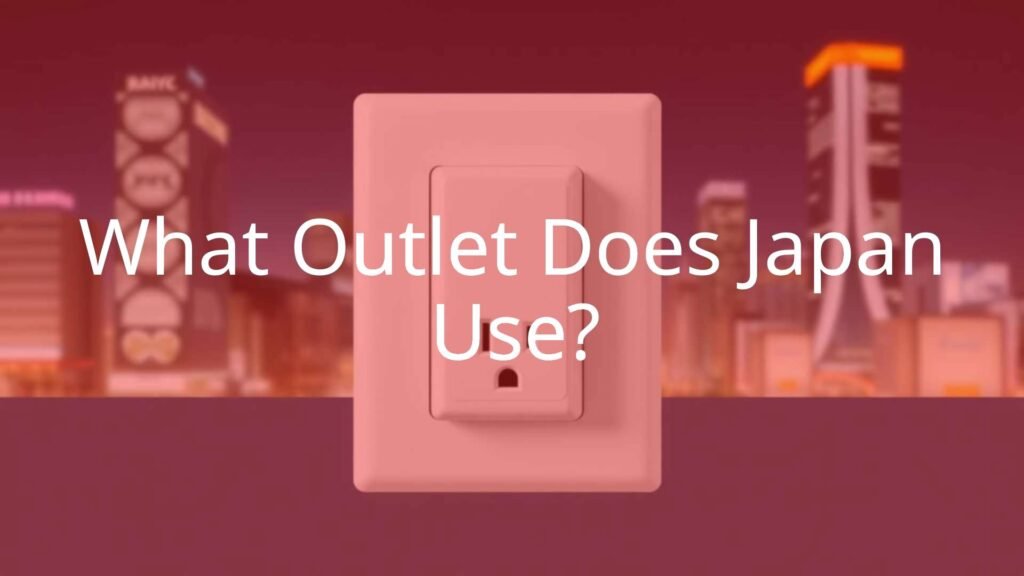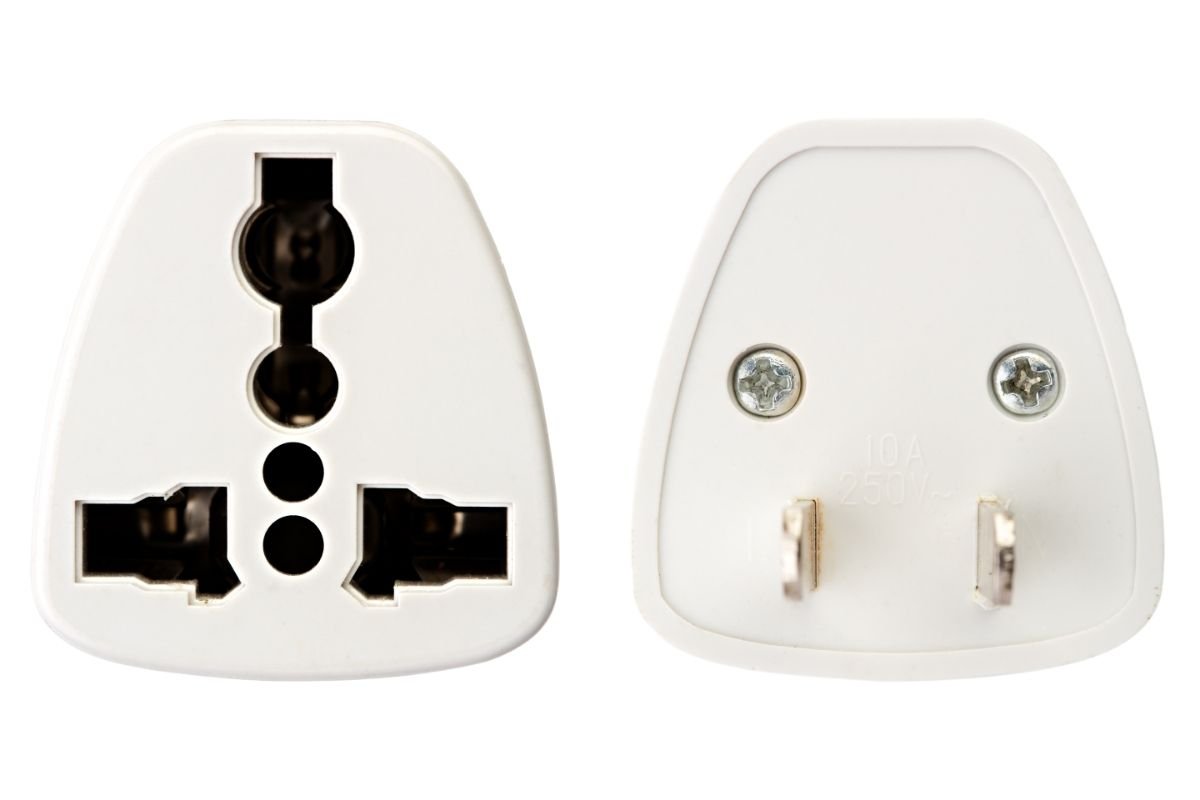Japan is a country where ancient culture exists alongside some of the world’s most advanced technology. If you’re getting ready to see cherry blossoms, walk through the busy streets of Tokyo, or find peace in a Kyoto garden, you might ask, “What kind of electrical outlets does Japan use?” The answer is simple: Japan uses mostly Type A outlets, and sometimes Type B. However, understanding Japan’s power system also means knowing about voltage, frequency, and the kinds of plugs used. Let’s break down the details so you can keep your devices charged during your trip.

What Outlet Does Japan Use?
What Are the Standard Plug Types in Japan?
Japan mainly uses two plug types: Type A and Type B.
- Type A: This is a flat, two-pronged plug. It’s the most common in Japan and can be found almost everywhere. If your device uses this style, you’re in luck.
- Type B: This looks like a Type A plug but adds a round or U-shaped grounding pin. You might see these in some places, but they are not as standard in Japan as in other countries like the US.
Type A is what you’ll likely use for most of your small electronics. It’s always best to have plugs or adapters for both types to avoid problems, but Type A is much more typical.
Are Japanese Outlets Different from US or European Outlets?
If you’re coming from the United States or Canada, you’ll notice Japanese outlets look almost the same as at home. Both Type A and Type B plugs fit in Japan, so your charging cables and other gear can often be used without extra equipment. The big difference is the voltage: while the US uses 120V, Japan has 100V. This can cause issues for devices that are sensitive to voltage differences.
If you’re from Europe, the UK, Australia, or similar places, the difference is bigger. Those countries use different plug shapes (like Type C, G, or I) and higher voltages (usually 220V-240V). Your devices will not fit into Japanese outlets, so you’ll need an adapter. More importantly, you may also have to pay attention to the voltage, as plugging in without the right equipment can harm your device.

Which Plug Sockets and Outlet Types Are Used in Japan?
Type A: Features and Compatibility
Type A outlets have two flat, parallel pins. They are the most widely seen outlet in Japan, from hotels to homes across the country. Most small electronic devices with two-prong plugs will fit right in. Many modern devices, like phone chargers and laptops, are made to work with Type A outlets, which is helpful if you’re traveling internationally.
Type B: Where and When Is It Used?
Type B outlets are similar but include a grounding pin for extra safety. In Japan, they are less common, usually found in new buildings or for certain larger appliances. If you have a Type B plug (with three prongs), you might need a simple 3-to-2 prong adapter, so you can still use regular Type A outlets. It’s smart to have this adapter just in case.
Do Japanese Outlets Have a Grounding Pin?
Some Japanese outlets do offer a grounding pin-the Type B kind. This added pin is mainly for safety, especially with larger devices. Still, most outlets you’ll find are Type A, which do not have a grounding pin. If you depend on devices that require grounding, you’ll need to look for a Type B outlet or use an adapter. Be careful: only use ungrounded adapters (without the grounding pin) with double-insulated devices-these are usually marked with a square-in-a-square symbol.
| Plug Type | Description | How Common in Japan? |
|---|---|---|
| Type A | Two flat parallel pins | Very common |
| Type B | Two flat parallel pins + round grounding pin | Less common |

What Is the Voltage and Frequency of Power in Japan?
Standard Voltage in Japanese Outlets
Japan’s electrical system runs at 100 volts, which is lower than most other countries. In the US, power is 120V, while Europe, Australia, and many others use 220V-240V. So, a device from the US may fit in the outlet, but might not work properly due to the lower voltage. For many gadgets like phones and computers, this isn’t usually a problem-they are built to work on lots of voltages. Appliances with heating elements (like hair dryers) may not perform well or could be damaged if used without checking compatibility.
Regional Frequency Differences: Eastern vs Western Japan
Japan is unusual because it uses two different power frequencies:
- East Japan (including Tokyo and Hokkaido): 50 Hz
- West Japan (including Osaka, Kyoto, and Hiroshima): 60 Hz
Most newer electronics can handle both. But, for devices that measure time (like electric clocks), this might make them run too fast or slow, depending on the region. For nearly all charging and electronics, this small difference doesn’t matter.
How Voltage and Frequency Affect Device Compatibility
You should always check if your electronics can use 100V and both 50Hz and 60Hz. If it says “INPUT: 100-240V, 50/60 Hz” somewhere on your charger or device, you’re good to go with a simple plug adapter. If not, using the wrong voltage can damage your device or make it underperform. Devices with heating elements are the most likely to have problems. For these, a voltage converter-or using a device made for 100V-is safer.
Do You Need a Plug Adapter or Voltage Converter for Japan?
Which Countries’ Plugs Fit Japanese Sockets?
If you’re from the US or Canada, your plugs (Type A and many Type B) should fit Japanese outlets with no hassle. Devices with three-pronged (Type B) plugs may need a cheap 3-to-2 prong adapter because most Japanese outlets are Type A. For everyone else-travelers from Europe, the UK, Australia, etc.-a plug adapter is required. It’s best to get a universal adapter before your trip. Japanese electronics stores sell them, but it’s easier to come prepared.
Adapter vs Converter: What Should You Bring?
- Plug Adapter: Changes the shape of your plug so it fits into Japanese outlets. It does not change the voltage.
- Voltage Converter: Changes the voltage from 100V (Japanese standard) to match your device’s needs. Bring this if your device only works on higher voltages and is not dual voltage.

Most phone and laptop chargers are dual-voltage now, so they only need a plug adapter in Japan. Kitchens and bathroom devices like hair dryers are often single-voltage, so check their labels. Using a voltage converter is safest for single-voltage items rated for more than 100V.
Dual Voltage vs Single Voltage Devices: What Works with Japanese Outlets?
| Device Type | Voltage Rating | Can Use in Japan? |
|---|---|---|
| Dual Voltage (e.g. phone charger, laptop charger) | “INPUT: 100-240V” | Yes – just need plug adapter |
| Single Voltage (e.g. many hair dryers, kettles) | 120V, 220V, 240V only | Use voltage converter (need adapter too) |
Before your trip, always look for the voltage information printed on your device’s charger or plug. If it says 100V-240V and 50/60Hz, you’ll be fine with a regular plug adapter. If not, a voltage converter is needed to stay safe and protect your gear.
- What Is a Maiko? - July 13, 2025
- What Does Domo Arigato Mean? - July 12, 2025
- What Does Naruto Mean? - July 12, 2025









